TREETENT 2005 edition |
|
||
| Dré Wapenaar 2005 Edition 2005: 10 Colors: - forest-green - dark-grey - dark-beige - bright-white Engineer: Technisch Buro Cor de Heer www.tbdeheer.nl Steel Frame: Constructor Dick van Campenhout, Waalhaven Rotterdam. Canvas: Ten Cate Technical Fabrics www.tencate.com Manufactured at: Studio Dré Wapenaar | TREETENT 2005 EDITION BOOMTENT EDITIE 2005 short history: • The TREETENT is a sculpture, NOT A COMMERCIAL PRODUCED TENT ! • The project was initially ment to support actions of “treeactivism” . The group of people that initiate those projects is coming from all layers of society. A perfect “free” mix of people, it seemed to me. The design developed itself by hanging a circular floor with a rope against a treetrunk. The size is derived from the space 2 people take lying next to each other. • Imagine: High in the tree, staying reasonable comfortable, the trunk can not be cut ! • From the very beginning this project lead it’s own life. It is a huge succes on shows every in the world. It was never used for activism ! • ABOUT STUDIO DRÉ WAPENAAR / CANVAS-ARCHITECTURE, -DESIGN and -SCULPTURE “Studio Dré Wapenaar works at the interface of architecture, design and sculpture. Sculpture is the base. Working with sculptures, presented in a three-dimensional context, is dealing with people turning around the work and being confronted with it. In working with tents and pavilions this movement is enlarged towards people turning and twisting around each other as well. It can be seen as a result of the quest to find out how groups of people and individuals relate. Tents, with the universal language they speak, are an excellent means to shape these relations in many different forms. • The first 3 TREETENTS have been produced for Campsite De Hertshoorn in Garderen in 1998. They were built by the brothers Gertjan and Dré Wapenaar, as well as the steel frame as the manufacturing of the canvas. • In 2005 we’ve built a new edition. This one can be loaned and used for shows directly from Studio Dré Wapenaar. • The first one was exhibited at the MoMA in New York for the show “ Safe, Design take on Risk “ ( fall 2005 ). After that it was on tour on many different shows in Europe. • For the NEIMAN MARCUS CHRISTMAS GIFTBOOK 2007 we’ve built a custom version, with a powdercoated frame, circular shaped matrass, adjustable steps and extra covering. "If You're Going to Be Safe, May as Well Be Stylish" By NICOLAI OUROUSSOFF Published: October 20, 2005 "Safe: Design Takes On Risk," which just opened at the Museum of Modern Art, sounds like the kind of show that might probe dark psychic territory. It was not to be. A pleasure to the eye, this show's beguiling array of objects floats just above the surface of its subject. And the result is as comforting as warm milk. The first major design exhibition to be organized since a vastly expanded MoMA reopened last year, "Safe" was conceived in early 2001 as an exploration of advances in rescue and emergency equipment. After Sept. 11, museum officials decided that the show should have a more positive emphasis, given the depth of the city's anxiety. The result is an array of exquisite design objects that are meant to make us feel secure, some as luxurious as exotic stuffed birds. Somewhere along the way, the show lost its edge. What could have been an intense exploration of one of the richest subjects in contemporary design - the heightened desire for safety in an increasingly terrifying world - seems strangely sentimental and breezy. Beautifully installed, the show never gets inside our heads or hearts. The exhibition does open on a wonderful note: a canvas teardrop-shaped "Treetent" designed for environmental activists by Dré Wapenaar. Hanging from twin brackets on a wall just outside the main gallery, the sagging canvas sack evokes an enormous swollen belly. It suggests both vulnerability and a need to retreat within the womb, as well as the psychological territory yet to be mined. From there, visitors glide along rows of rarefied objects, some of which hint at the collective trauma the city experienced on 9/11 , and its subsequent struggle to maintain the illusion of normalcy in an era when simply riding the subway could be considered an act of defiance. A cluster of sleek stainless steel security bollards, now a staple of the New York streetscape, for example, drive home the extent to which the constant fear of terrorist attack has been sublimated. The Medusa-like security cameras of "Securitree," by the Mexican artist Raúl Cárdenas Osuna, suggest both the elusiveness of that security and the creeping encroachment on our personal freedoms -the competing fears of violence and oppression. Some of the most striking products are the simplest, like the lurid graphics on a set of cards warning clubgoers against sexually transmitted diseases - with the word gonorrhea melting in front of a red sun. The most powerful objects are those that draw us out of a sheltered reality and prod us to examine threats to daily existence in much of the world, like boots mounted on spiderlike prongs for walking through minefields and a lightweight mine detector that can be packed away in a handbag. An innocent-looking plastic pup tent plugged into a bright yellow air filter, designed by an Israeli firm to protect infants from chemical and biological attacks looks as though it could be on display at Target. A more selective show would have delved deeply into these themes. At times, it seems, we are surrounded by images of death. We live with a mounting sense of dread. Exploring creative responses to this reality from sublimation to defiance to rage would have made for a more provocative show. Instead, many of the objects here were seemingly chosen for their standard of beauty. Created by the legendary designers of Pininfarina, the gorgeous podlike car body of the Nido evokes the high era of Italian style but contributes little to the show's main theme. One might also question the inclusion of a curved plastic phallus designed to hold a banana. By the time you get to the Fresh Kiss Breath Checker in a pink-and-white plastic case and a colorful selection of "soft-bite safety spoons" by Gerber the show has lost its interest and focus. If anything, the department's emphasis on aesthetics has only become more extreme in recent years as the boundary between art and industrial design has faded. The closest thing to social commentary in this show are some conceptual projects by various artists - barbs on a coil of deadly razor wire designed to look like little butterflies, for example, or an enormous padded vest conceived as protective gear for street protesters, complete with a hidden video camera to catch nightstick-wielding policemen. There are some who will perceive a confounding desire to gloss over the apocalyptic anxieties that grip the American consciousness, from ground zero to the Gulf Coast. But the show's focus on formal aesthetics does plant it firmly within the Modern's tradition. When Philip Johnson, the founder of the museum's department of architecture, first introduced the International Style to an American audience in the 1930's, he famously stripped the movement of its social and political meanings. That agenda continued through the cold-war era, when critics charged, with some justification, that the museum's support of abstraction fit neatly within a broader government agenda to project a progressive image to the world. But in some ways, the show also brings to mind the bent-plywood furniture of Charles and Ray Eames, which became alluring emblems of the postwar American dream. "Safe" seems to be shaped by the innocent belief that good, clever designs can lead to a more enlightened world. Today, that notion seems naïve. It's hard to remember a time in American history when the unnerving effect of world politics on daily life has been more palpable. A sign in the subway alerting passengers that the police are checking bags and knapsacks triggers a sequence of emotions: fear, repression and, finally, denial. That sign - mounted on a cheap board, with simple lettering - is more likely to leave a lasting imprint than the most beautiful objects in this show. The show continues through Jan. 2 at the Museum of Modern Art, 11 West 53rd Street, Manhattan |

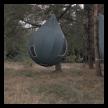

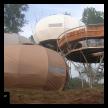
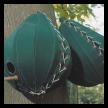
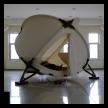

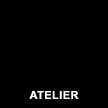







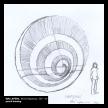
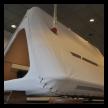
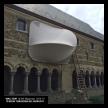
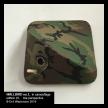
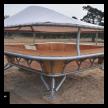





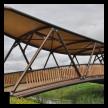
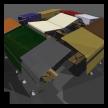
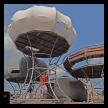
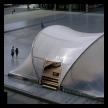
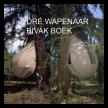
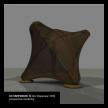

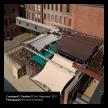
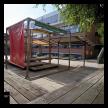

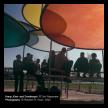

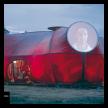
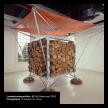
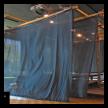
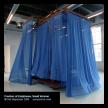

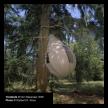

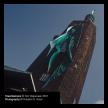
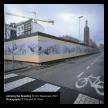
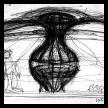
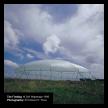
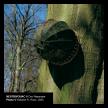
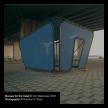
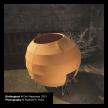

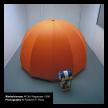
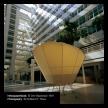
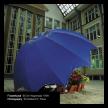
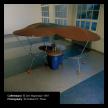
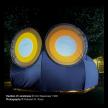
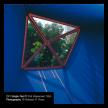

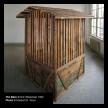
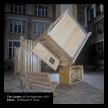
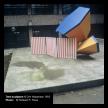

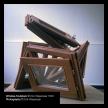

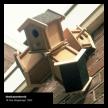
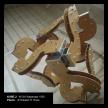
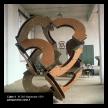

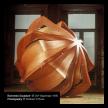

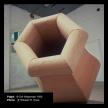
Webdesign:
Studio GloriusVandeVen